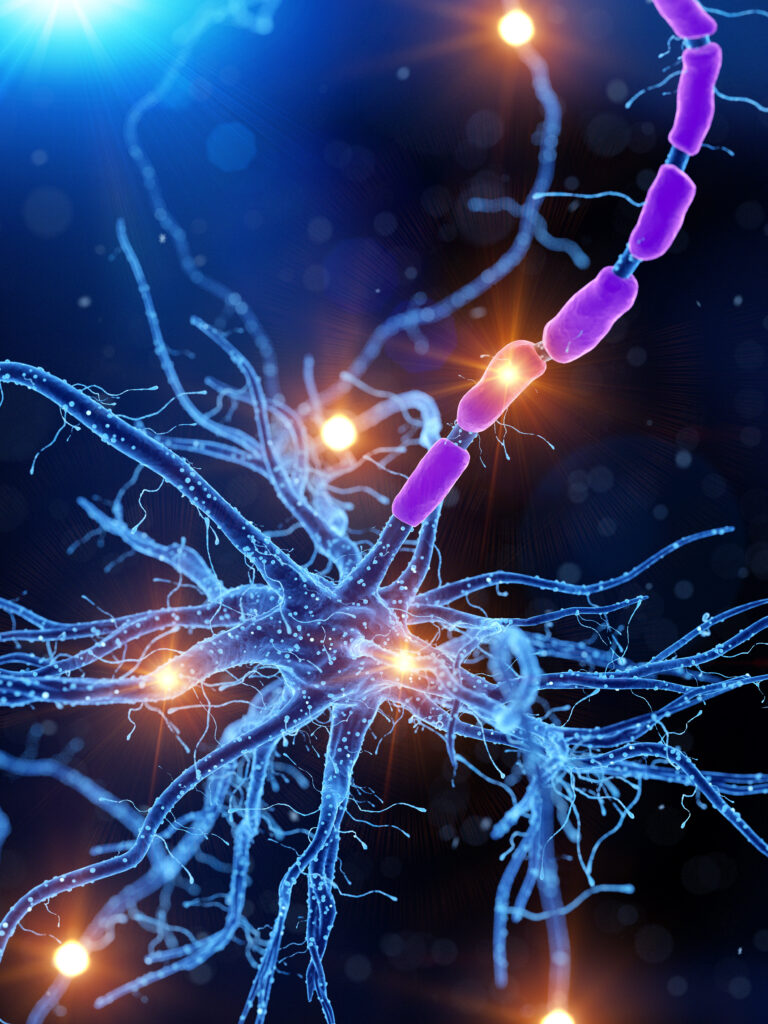### The Secret Life of Neurons: Unmasking Cellular Communication in Alzheimer’s
Alzheimer’s disease is a complex condition that affects how our brains work. It disrupts memory, thinking, and reasoning, making everyday tasks challenging. But what exactly happens inside the brain when Alzheimer’s takes hold? Let’s dive into the secret life of neurons and explore how cellular communication is affected in this disease.
#### The Neurons: The Brain’s Messengers
Neurons are the brain’s messengers. They communicate with each other using electrical and chemical signals. This communication is crucial for our thoughts, movements, and memories. In a healthy brain, neurons work together in perfect harmony, sending and receiving signals to keep everything running smoothly.
#### Excitation and Inhibition: The Balance of Power
Neurons communicate through two main types of signals: excitatory and inhibitory. Excitatory signals are like a loud voice, urging other neurons to fire and send their own signals. Inhibitory signals, on the other hand, are like a gentle whisper, calming down other neurons and preventing them from firing too much. This balance between excitatory and inhibitory signals is called the excitation-inhibition (E-I) balance.
In Alzheimer’s disease, this balance is disrupted. Imagine a loud, constant noise that never lets up, making it hard for neurons to communicate properly. This disruption can lead to confusion, memory loss, and other symptoms associated with Alzheimer’s.
#### The Role of Amyloid Plaques
One of the hallmarks of Alzheimer’s is the formation of amyloid plaques. These are like sticky clumps of protein that build up in the brain and disrupt communication between neurons. A protein called amyloid precursor protein (APP) is central to this process. Normally, APP helps maintain healthy synaptic connections, but when it’s misprocessed, it can lead to the formation of these plaques.
Recent research has shown that talin, a protein that helps organize synapses, interacts with APP. This interaction is crucial for maintaining healthy synaptic connections. When talin and APP don’t work together properly, it can lead to mechanical dyshomeostasis at the synapse, causing synaptic dysfunction and contributing to Alzheimer’s disease[1].
#### Blood Vessel Growth and Communication
Another aspect of Alzheimer’s involves blood vessel growth. In people with the disease, certain genes that control blood vessel growth behave differently in various types of brain cells. This abnormal gene expression can alter communication patterns between cells, reducing overall communication through these signaling pathways[2].
#### Cholesterol and Lipid Imbalance
Cholesterol is a vital component of cellular membranes, helping with hormone production and membrane stability. However, disruptions in cholesterol movement between cell compartments may play a role in Alzheimer’s and other neurodegenerative diseases. Advanced fluorescent probes have been developed to track cholesterol within cellular membranes, providing new insights into how lipid imbalances contribute to amyloid plaque formation[3].
#### New Paths to Treatment
Understanding how cellular communication is disrupted in Alzheimer’s offers new paths to treatment. Researchers are exploring ways to restore mechanical stability at synapses, which could slow disease progression. For example, drugs that stabilize focal adhesions—protein complexes that anchor cells to their surroundings—might be repurposed to help maintain synaptic integrity[1].
Additionally, treatments aimed at improving the E-I balance could help restore physiological communication between neurons. This could potentially improve symptoms for people with Alzheimer’s by enhancing the brain’s ability to communicate effectively[5].
In conclusion, the secret life of neurons in Alzheimer’s disease is complex and multifaceted. By understanding how cellular communication is disrupted, we can begin to develop new treatments that target the root causes of the disease. This journey into the brain’s inner workings holds promise for improving the lives of those affected by Alzheimer’s.





